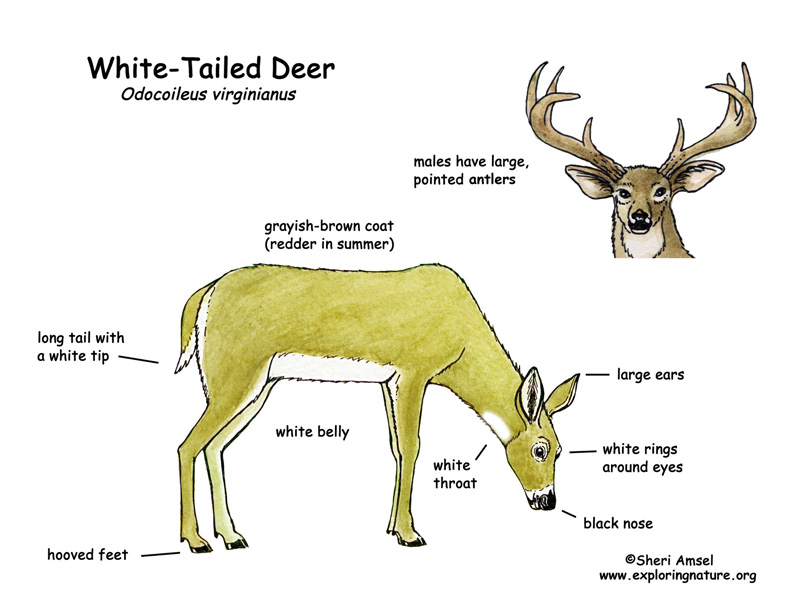

White-tailed deer are found across Southern Canada and throughout the eastern U.S., mid-west and Rocky Mountains.
They are found in forests, farms and open, brushy country.
They are brown in summer and gray in winter. They have a large tail that they raise when they are running away. The bright white underside of their tail waves like a flag, perhaps to startle off predators or help fawns follow their mothers off to safety. Males reach 200 pounds and grow spiked antlers that they lose each winter and grow back every spring. To survive the winter, white-tailed deer grow a dense coat of wooly underfur and course guard hairs to trap warm air against the body. They move around less in winter, often forming a "deer yard" in a coniferous forest grove that is protected from the wind. They use their sharp hooves to paw through the snow for grass and acorns.
They travel in small groups. They are active mostly at early morning and late evening. Though they can be seen at all times of day.
They feed on twigs, grass, and acorns.
Predators are mountain lions. Fawns may be taken by coyotes, bears, or wolves.
They are pregnant for 6 months (gestation). They have 1-3 fawns in early June.
They live up to 10 years in the wild. They are not threatened.
Kingdom: Animalia
Phylum: Chordata
Subphylum: Vertebrata
Class: Mammalia
Order: Artiodactyla
Family: Cervidae
Subfamily: Capreolinae
Genus: Odocoileus
Species: Odocoileus virginianus
When you research information you must cite the reference. Citing for websites is different from citing from books, magazines and periodicals. The style of citing shown here is from the MLA Style Citations (Modern Language Association).
When citing a WEBSITE the general format is as follows.
Author Last Name, First Name(s). "Title: Subtitle of Part of Web Page, if appropriate." Title: Subtitle: Section of Page if appropriate. Sponsoring/Publishing Agency, If Given. Additional significant descriptive information. Date of Electronic Publication or other Date, such as Last Updated. Day Month Year of access < URL >.
Amsel, Sheri. "Deer (White-Tailed)" Exploring Nature Educational Resource ©2005-2024. March 25, 2024
< http://www.exploringnature.org/db/view/328 >

